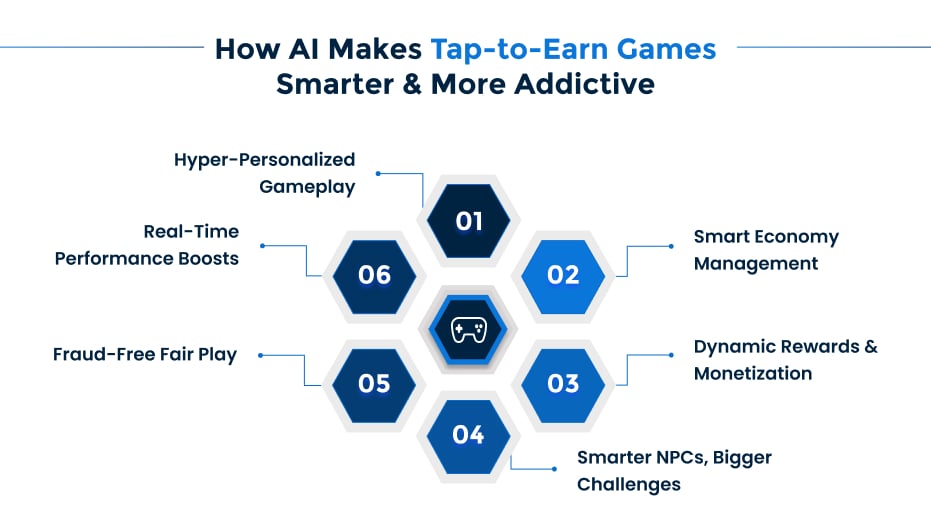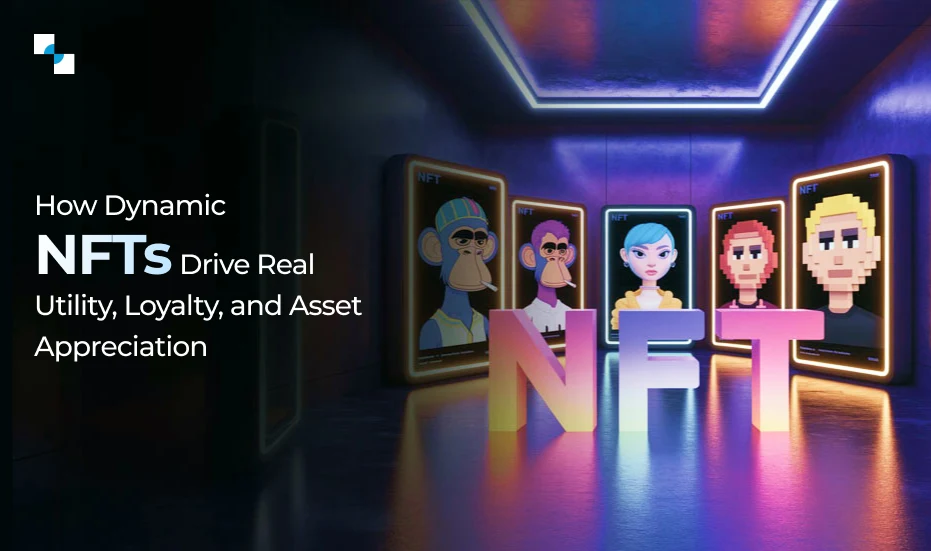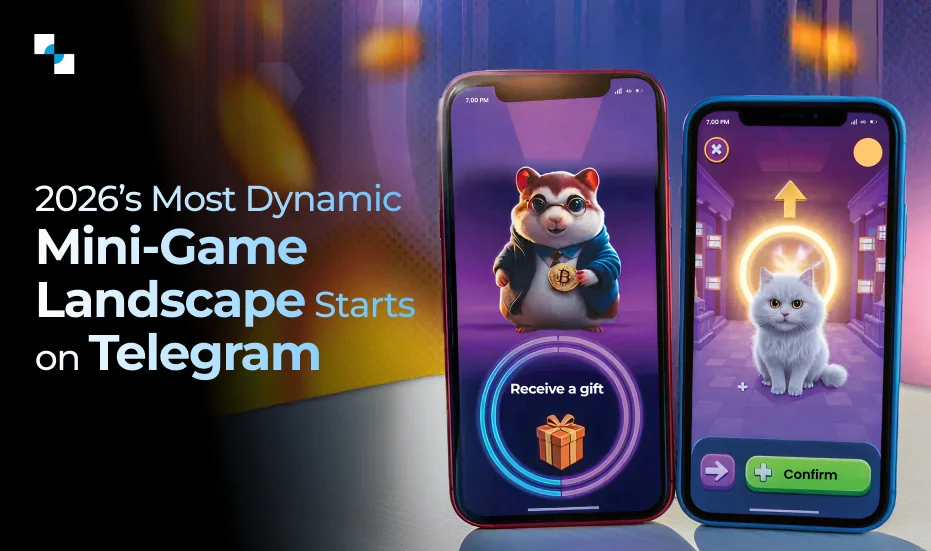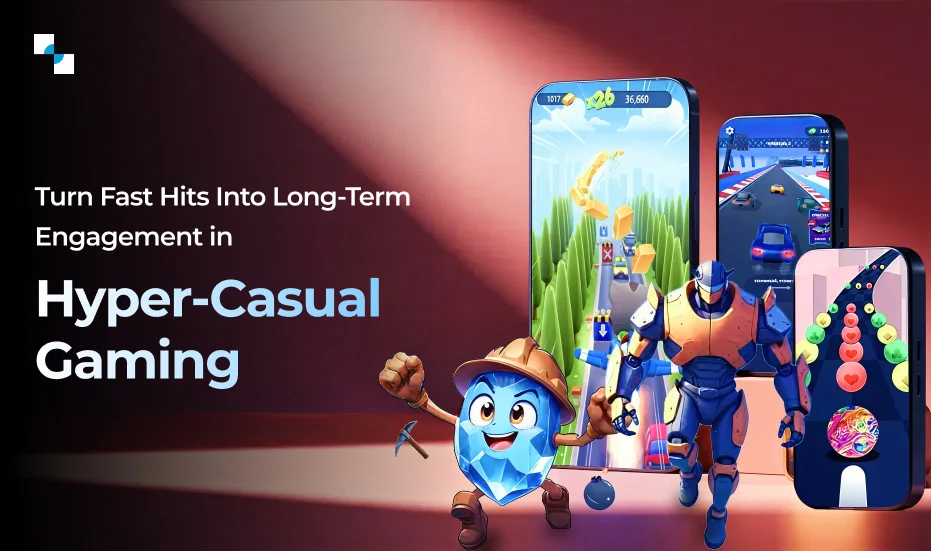Among the myriad gaming genres gaining traction, tap to earn Game development stands out as a lucrative and innovative niche. These games, which reward players for simple interactions like tapping or swiping, have captivated millions worldwide due to their accessibility and addictive mechanics. But what happens when you infuse this genre with cutting-edge AI technology? The result is a paradigm shift that enhances user engagement, optimizes monetization strategies and opens new avenues for creativity.
This article delves into the transformative role of AI in tap and earn eame development, offering insights from a business perspective to inspire entrepreneurs and developers alike.
Let’s first explore why tap tap game development has become such a compelling segment within the gaming ecosystem.
How Tap to Earn Game Development Appeals to Modern Gamers?
Modern gamers value convenience, instant rewards, and social connectivity. Tap to earn game development is focused on delivering these attributes. For instance, the quick feedback loop created by immediate rewards taps into psychological principles of reinforcement, encouraging repeated play. Additionally, tap and earn game development includes social features, such as leaderboards and multiplayer modes, fostering a sense of community and competition.
Moreover, the rise of gamification in non-gaming industries—such as fitness apps, education platforms, and productivity tools—has further legitimized the concept of earning rewards through interaction. This trend has spilled over into tap tap game development, where developers are increasingly blending entertainment with real-world incentives, such as cryptocurrency rewards or gift cards. It is clear that while tap-to-earn games hold immense potential, their success hinges on delivering an engaging and personalized experience. This is where artificial intelligence comes into play, revolutionizing how developers design, optimize, and monetize these games.
Why AI is a Game-Changer for Tap and Earn Game Development?
The integration of AI into tap to earn game development offers several compelling advantages:
- Dynamic Difficulty Adjustment (DDA):
AI can monitor player performance and adjust difficulty levels in real time, ensuring that the game remains challenging yet achievable. This balance is crucial for maintaining engagement and preventing frustration or boredom. - Personalized Experiences:
By leveraging machine learning, developers can create hyper-personalized experiences that cater to individual preferences. For instance, AI can recommend specific reward types based on a player’s past interactions, enhancing their sense of accomplishment and satisfaction. - Efficient Resource Allocation:
AI-driven analytics enable developers to allocate resources more effectively, whether it’s optimizing server loads during peak usage or identifying which features drive the most revenue. This efficiency is particularly valuable in tap and earn game development, where margins can be slim.

How AI Enhances Gameplay Mechanics in Tap Tap Game Development?
One of the most significant contributions of AI to tap tap game development lies in its ability to refine gameplay mechanics. AI transforms static game designs into dynamic, player-centric experiences. Let’s explore how:
1. Dynamic Difficulty Adjustment (DDA) for Enhanced User Engagement
Dynamic Difficulty Adjustment (DDA) is a technique where the game’s challenge level adapts based on the player’s skill and performance. In tap to earn game development, this ensures that players remain engaged without feeling overwhelmed or underwhelmed. For instance, if a player consistently taps at a high speed, the game might introduce faster-moving targets or additional obstacles to maintain the challenge. AI plays a pivotal role in implementing DDA by continuously analyzing player inputs and outcomes. Machine learning models can identify patterns in tapping frequency, accuracy, and timing, using this data to calibrate difficulty levels dynamically.
2. Personalized Experiences Through Machine Learning
Personalization is a cornerstone of modern gaming, and AI takes it to the next level in tap and earn game development. By analyzing player behavior, AI can tailor every aspect of the gaming experience, from reward structures to visual themes. For example, if a player frequently engages with certain types of rewards—such as virtual currency or power-ups—the game can prioritize those rewards in future sessions. Machine learning algorithms excel at uncovering hidden preferences and trends. They can segment players into distinct cohorts based on their behavior, enabling developers to craft targeted experiences.
3. Real-Time Analytics and Feedback Loops
AI tools can track metrics such as session length, tap frequency, and in-game purchases, offering a comprehensive view of user engagement. These insights are invaluable for optimizing gameplay mechanics and identifying areas for improvement. Feedback loops further amplify the impact of AI by enabling iterative improvements after tap tap game development. For example, if analytics reveal that players tend to drop off after a certain level, developers can use AI to analyze why this occurs and implement changes accordingly.

Monetization Strategies Boosted by AI in Tap to Earn Games
Monetization is the lifeblood that sustains innovation and growth post a successful tap to earn game development. Artificial intelligence enables hyper-targeted strategies that maximize revenue without compromising user experience. Let’s delve further into the details:
1. AI-Driven Ad Targeting and Placement
Advertisements are a cornerstone of revenue generation in tap and earn game development, but poorly executed ads can alienate players and drive them away. AI addresses this challenge by ensuring that ads are not only relevant but also seamlessly integrated into the gameplay experience. For instance, AI algorithms analyze player behavior—such as session duration, preferred rewards, and interaction patterns—to determine the optimal timing and format for ads. Consider a scenario where a player frequently engages with reward-based video ads. AI can identify this preference and prioritize video ads over static banners, ensuring higher engagement rates.
2. In-Game Purchases Tailored to Player Behavior
In-app purchases represent another significant revenue stream in tap tap game development. AI-powered recommendation engines excel at this task by analyzing player behavior and predicting which items are most likely to appeal to them. For example, if a player shows a preference for cosmetic upgrades, such as skins or avatars, the game can highlight these options in the in-game store. This level of personalization not only boosts conversion rates but also enhances the player’s sense of satisfaction.
3. Subscription Models Enhanced by Predictive Analytics
AI plays a crucial role in optimizing these models by identifying players who are most likely to subscribe. Predictive analytics tools in tap to earn game development analyze factors such as engagement levels, spending habits, and loyalty metrics to create profiles of potential subscribers. Once identified, these players can be targeted with personalized incentives, such as discounted subscription rates or early access to new features. AI also enables developers to monitor subscriber behavior post-conversion, ensuring that they continue to derive value from their subscriptions. This data-driven approach minimizes churn and maximizes lifetime value (LTV) for each subscriber.
AI-Powered Content Creation and Innovation
Content is king in the gaming world, and tap and earn game development is no exception. Artificial Intelligence helps in creating fresh, engaging content consistently.
1. Procedural Content Generation for Infinite Gameplay
Procedural content generation (PCG) refers to the use of algorithms to create game elements dynamically, ensuring that no two playthroughs are identical. In tap tap game development, PCG is particularly valuable for maintaining player interest over time. For instance, AI can generate new challenges, obstacles, or reward structures based on predefined rules. Consider a tap-to-earn game where players collect resources to build virtual cities. AI can dynamically generate new city layouts, resource types, or environmental conditions, offering endless possibilities for exploration and experimentation.
2. AI as a Creative Partner: Designing Levels, Characters, and Challenges
AI-powered design assistants can suggest level layouts, character designs, or challenge mechanics based on player preferences and market trends. These suggestions can then be refined by human designers, resulting in a synergy that combines computational efficiency with creative intuition. In tap to earn game development, this collaboration is particularly impactful, as an AI system can analyze player feedback and engagement metrics to propose new features or mechanics.
3. Balancing Creativity and Automation in Tap and Earn Game Development
While AI offers immense potential for content creation, it’s essential to strike a balance between automation and human creativity. Over-reliance on AI-generated content can lead to generic or uninspired designs that fail to captivate players. Conversely, underutilizing AI may result in missed opportunities for innovation and efficiency. The key lies in using AI as a tool rather than a replacement for human ingenuity. For instance, tap and earn game development experts can leverage AI to handle repetitive tasks, such as testing or optimization, freeing up time for creative brainstorming. Similarly, AI can provide data-driven insights that inform design decisions, ensuring that every element of the game aligns with player expectations.
Embrace AI for Sustainable Success in Your Gaming Venture
The infusion of artificial intelligence into tap tap game development signifies a revolutionary leap, redefining the entire gaming lifecycle—from ideation and content creation to monetization and player engagement. This technological synergy not only enhances user satisfaction but also paves the way for sustainable growth and long-term success.
As we peer into the horizon of gaming’s future, the convergence of AI and tap-to-earn mechanics promises to unlock unprecedented dimensions of creativity, innovation, and profitability. The path forward is unequivocal: embracing AI is no longer a luxury but a strategic imperative in today’s hyper-competitive digital landscape. To fully capitalize on AI’s potential, it is essential to rely on a professional team that combines AI experts with seasoned tap to earn game development specialists. Our team at Antier possesses the technical prowess and creative insight needed to seamlessly integrate AI technologies while crafting games that captivate audiences, drive engagement, and deliver lasting value. Connect with us today.







